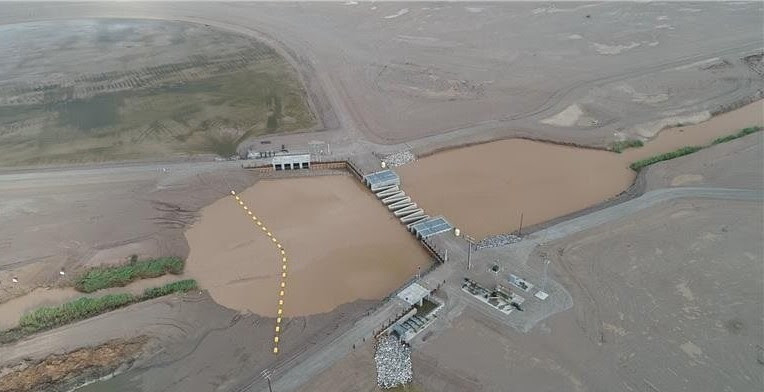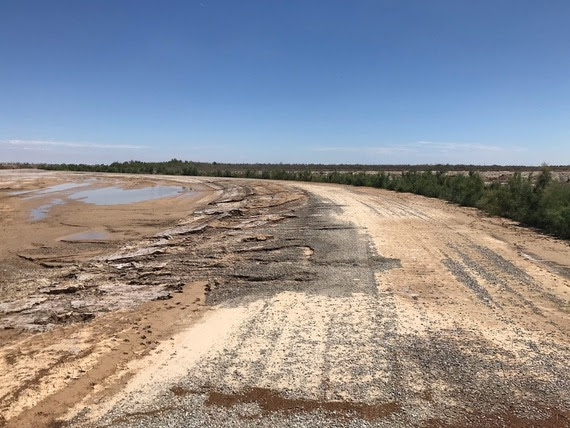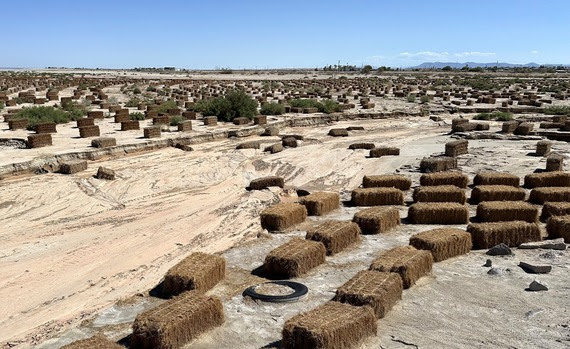From the Salton Sea Management Program:
As communities continue to recover from the impacts of Tropical Storm Hilary, active restoration projects around the Salton Sea report minimal construction damage in the wake of the storm.
Species Conservation Habitat Project Accommodates Flood Flows
The Species Conservation Habitat Project (SCH), located at the southern end of the Salton Sea, saw an increase in flows from the New River as a result of the storm. The increase amounted to twice the typical inflow during the active storm period.

The New River Diversion Structure was able to adequately capture and retain water as planned. However, the flood gates were opened out of an abundance of caution even though rain levels and New River inflows were below the forecasted levels.

After opening the flood gates, water continued its way and streamed through the New River until reaching the Salton Sea. The SCH was designed and built to undertake a 100-year flood event protecting the overall integrity of the project and helping protect adjacent land properties from flooding.

With the substantial amount of water that came in, the interception ditch, another component of the SCH project, did overtop into the flood buffer zone. The interception ditch is designed to do that, by letting the water flow by gravity into the flood buffer zone. As a result of the overtopping, some erosion did occur in the berm situated between the interception ditch and the flood buffer zone.
Vegetation Enhancement Projects Report No Significant Damage

Although Tropical Storm Hilary brought in a significant amount of water into the Sea’s shoreline, the Vegetation Enhancement Project sites report no significant damage within the project areas. Storm runoff eroded soil and created waterways known as ephemeral streams. Now that these streams have emerged, the SSMP team can plan to capture, divert, and spread stormwater in a more controlled manner in the future. In addition, these storm events allow the SSMP to better determine and identify the best areas to place the grass bales. Displaced bales will not be returned to their original placement.

In fact, the substantial amount of water that moved through the project areas is significantly beneficial for natural plant recruitment and supports existing younger plants across all vegetation enhancement sites.
Events like Tropical Storm Hilary gives the SSMP an opportunity to see if projects are operating as designed and how to adaptively manage each project’s maintenance and reinforce any specific areas.
Click here to visit the Salton Sea Management Program website. | Haga clic aquí para acceder al sitio web en español.



